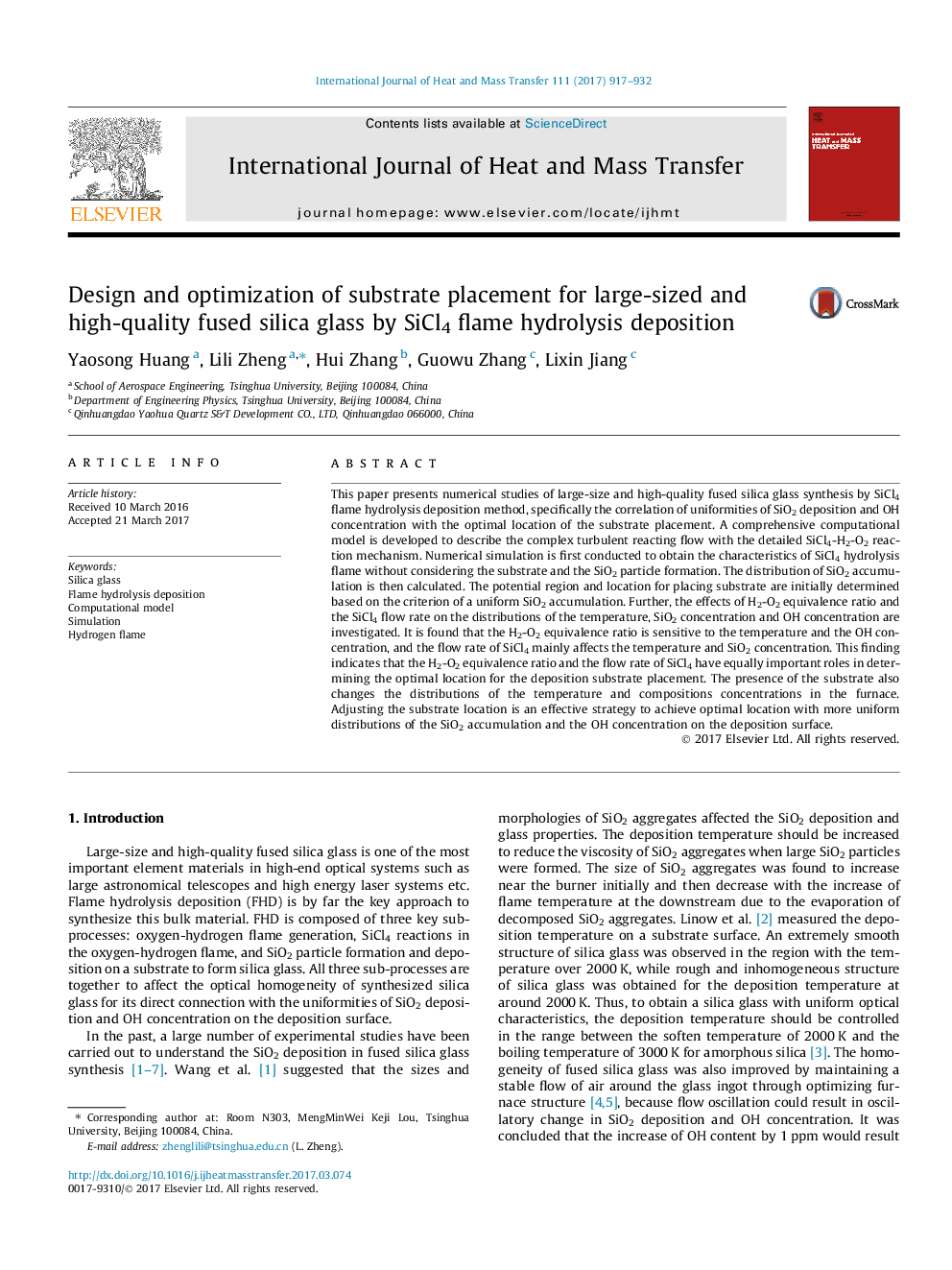| Article ID | Journal | Published Year | Pages | File Type |
|---|---|---|---|---|
| 4994126 | International Journal of Heat and Mass Transfer | 2017 | 16 Pages |
Abstract
This paper presents numerical studies of large-size and high-quality fused silica glass synthesis by SiCl4 flame hydrolysis deposition method, specifically the correlation of uniformities of SiO2 deposition and OH concentration with the optimal location of the substrate placement. A comprehensive computational model is developed to describe the complex turbulent reacting flow with the detailed SiCl4-H2-O2 reaction mechanism. Numerical simulation is first conducted to obtain the characteristics of SiCl4 hydrolysis flame without considering the substrate and the SiO2 particle formation. The distribution of SiO2 accumulation is then calculated. The potential region and location for placing substrate are initially determined based on the criterion of a uniform SiO2 accumulation. Further, the effects of H2-O2 equivalence ratio and the SiCl4 flow rate on the distributions of the temperature, SiO2 concentration and OH concentration are investigated. It is found that the H2-O2 equivalence ratio is sensitive to the temperature and the OH concentration, and the flow rate of SiCl4 mainly affects the temperature and SiO2 concentration. This finding indicates that the H2-O2 equivalence ratio and the flow rate of SiCl4 have equally important roles in determining the optimal location for the deposition substrate placement. The presence of the substrate also changes the distributions of the temperature and compositions concentrations in the furnace. Adjusting the substrate location is an effective strategy to achieve optimal location with more uniform distributions of the SiO2 accumulation and the OH concentration on the deposition surface.
Related Topics
Physical Sciences and Engineering
Chemical Engineering
Fluid Flow and Transfer Processes
Authors
Yaosong Huang, Lili Zheng, Hui Zhang, Guowu Zhang, Lixin Jiang,
